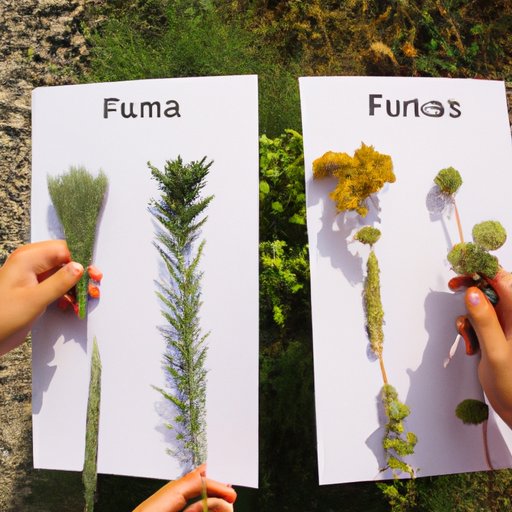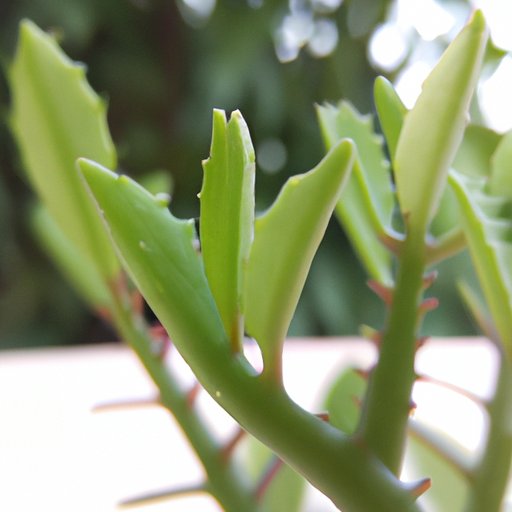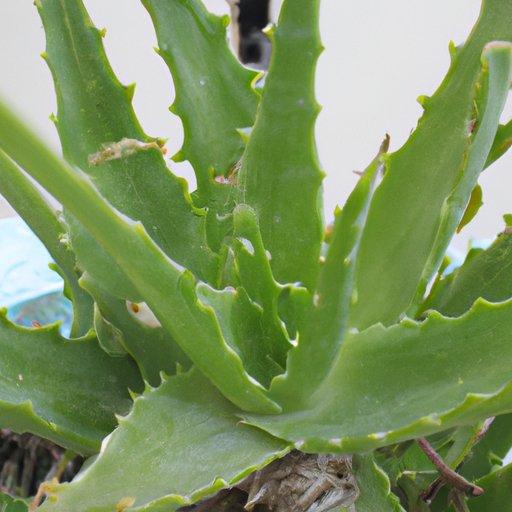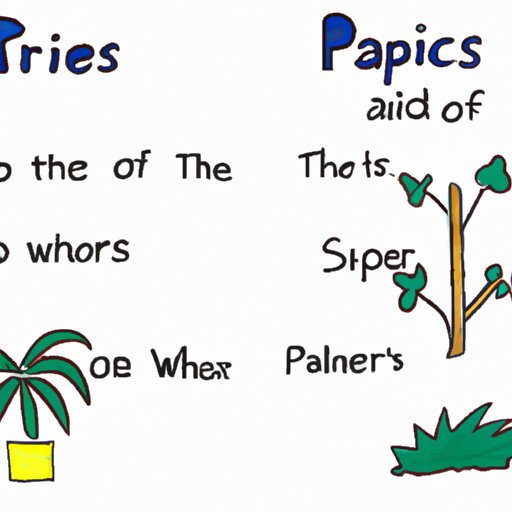Introduction
Plants are living organisms that belong to the kingdom Plantae. This includes trees, shrubs, herbs, grasses, vines, ferns, mosses, and green algae. Plants are essential to life on Earth, providing food, oxygen, shelter, and many other benefits to humans and animals alike. In this article, we’ll explore how to effectively describe plants in writing.

Compare and Contrast: Analyze the Similarities and Differences Between Different Plants
When describing plants in writing, it’s important to consider how they compare and contrast with one another. Different types of plants can vary greatly in terms of size, shape, color, texture, and other characteristics. For example, a rose bush and a maple tree may both be classified as plants, but they have very different appearances and functions. When comparing and contrasting plants, it’s helpful to focus on specific characteristics and explain how they differ or are similar.

Describe the Appearance: Describe the Visual Aspects of the Plant
When describing the appearance of a plant, it’s important to consider its height, shape, color, texture, and other features. For example, a tall, slender tree might be described as “towering” or “spindly”, while a short, wide shrub might be described as “stubby” or “bushy”. Colors can also be described using adjectives such as “vibrant”, “dull”, “rich”, or “muted”. Texture can be conveyed through words like “smooth”, “fuzzy”, “prickly”, or “waxy”.
Explain the Function: Explain How the Plant Functions in Its Environment
In addition to describing the visual aspects of a plant, it’s also important to explain how it functions in its environment. All plants play an important role in the food chain, as they produce energy from sunlight via photosynthesis and provide food for other organisms. Plants also help to maintain the balance of the ecosystem by filtering air and water, stabilizing soil, and providing habitat for wildlife. Furthermore, plants are beneficial to humans, as they provide us with food, medicine, fuel, building materials, and much more.

Detail Its Uses: Discuss How People Use the Plant
When describing a particular plant, it’s helpful to detail how people use it. Many plants are used as food sources, either directly or indirectly. Others are used medicinally, as they contain compounds with medicinal properties. Certain plants are also used as building materials, fuel, or even clothing. Explaining how people use the plant can help to give your readers a better understanding of its importance.
Utilize Metaphors and Similes: Use Creative Language to Convey the Beauty, Power, and Uniqueness of the Plant
Metaphors and similes are powerful tools for describing plants in writing. By using creative language, you can convey the beauty, power, and uniqueness of the plant. For example, a tall tree might be described as “reaching for the sky” or “soaring above the clouds”, while a bright flower might be described as “a burst of sunshine” or “a ray of hope”. Utilizing metaphors and similes can help bring your descriptions to life and make them more engaging for your readers.
Tell a Story: Write a Narrative About the Journey of a Particular Plant, from Seedling to Maturity
Another way to engage readers is to tell the story of a particular plant, from seedling to maturity. Describe its journey from a tiny sprout to a towering tree, or from a delicate bud to a vibrant flower. Focus on the details, such as how the roots grow deep into the soil, or how the branches reach for the sun. Crafting a narrative about the growth and development of a plant can be a great way to give your readers a deeper understanding of its importance.
Conclusion
Describing plants in writing can be a challenge, but with a little creativity and imagination, you can craft vivid and engaging descriptions that will captivate your readers. By comparing and contrasting different plants, describing their appearance, explaining their function, detailing their uses, utilizing metaphors and similes, and telling a story, you can create descriptions that will truly bring your subject to life.
(Note: Is this article not meeting your expectations? Do you have knowledge or insights to share? Unlock new opportunities and expand your reach by joining our authors team. Click Registration to join us and share your expertise with our readers.)
